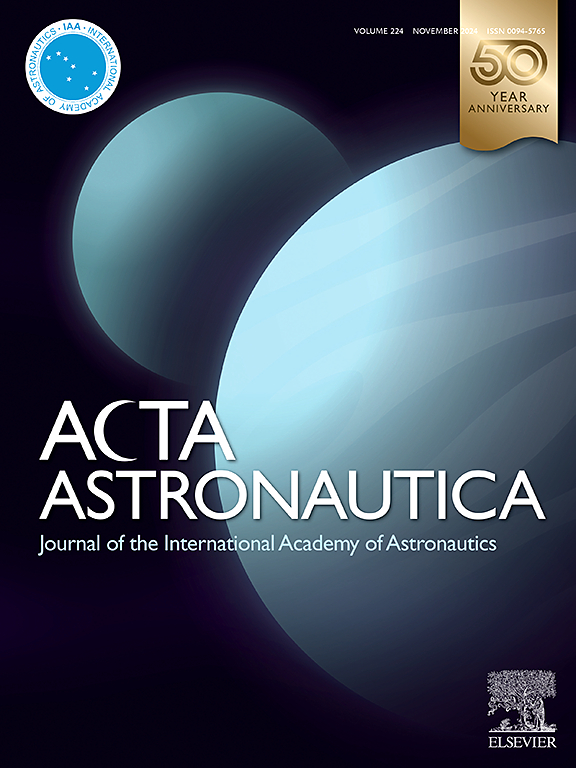用于 SAR-GMTI 飞行任务的空间系留系统的沿轨部署控制
IF 3.1
2区 物理与天体物理
Q1 ENGINEERING, AEROSPACE
引用次数: 0
摘要
全球、全天候和全天时合成孔径雷达(SAR)是地面移动目标指示(GMTI)任务的最佳平台,系留约束为此类配置提供了稳定的机械连接。为满足此类任务的要求,空间系留系统(STS)必须部署到水平位置,以形成必要的沿轨干扰基线,而这相对于传统的垂直位置是不稳定的,也没有得到足够的重视。为解决这一问题,本研究将重点放在将空间系留系统部署到不稳定水平位置的控制上。首先,分析了 STS 在水平位置的特性,并根据 GMTI 任务的观测原理定义了测量误差的合成标准。其次,提出两种部署控制策略,并分别考虑两种情况生成相应的期望轨迹。最后,考虑到水平位置的不稳定性,设计了一个自适应闭环控制器,利用反步进方法来解决重力力矩和其他干扰。仿真结果表明,在两种部署策略下,系统都能成功达到所需的水平位置,并且所设计的控制器能在初始状态误差和外部干扰下快速跟踪轨迹。本文章由计算机程序翻译,如有差异,请以英文原文为准。
Along-track deployment control of space tether system for SAR-GMTI mission
Global, 24/7, and all-weather Synthetic Aperture Radars (SARs) are optimal platforms for Ground Moving Target Indication (GMTI) missions, and the tether constraint provides a stable mechanic connection for such configurations. To fulfill the requirements of such missions, the Space Tether System (STS) must be deployed to horizontal positions to form the necessary along-track interference baseline, which is unstable relative to traditional vertical positions and has not received adequate focus. To deal with this problem, this study focuses on the deployment control of the STS to the unstable horizontal positions. Firstly, the properties of the STS at the horizontal position are analyzed, and a synthetic criterion of measurement error is defined based on the observation principle of the GMTI mission. Secondly, two deployment control strategies are proposed, and corresponding desired trajectories are generated by considering two occasions respectively. In the end, considering the instability of horizontal positions, an adaptive closed-loop controller is designed utilizing the backstepping method to address gravitational moment and other disturbances. Simulations demonstrate that the system can successfully attain the desired horizontal positions under both deployment strategies, and the designed controller can quickly track trajectories under initial state errors and external disturbances.
求助全文
通过发布文献求助,成功后即可免费获取论文全文。
去求助
来源期刊

Acta Astronautica
工程技术-工程:宇航
CiteScore
7.20
自引率
22.90%
发文量
599
审稿时长
53 days
期刊介绍:
Acta Astronautica is sponsored by the International Academy of Astronautics. Content is based on original contributions in all fields of basic, engineering, life and social space sciences and of space technology related to:
The peaceful scientific exploration of space,
Its exploitation for human welfare and progress,
Conception, design, development and operation of space-borne and Earth-based systems,
In addition to regular issues, the journal publishes selected proceedings of the annual International Astronautical Congress (IAC), transactions of the IAA and special issues on topics of current interest, such as microgravity, space station technology, geostationary orbits, and space economics. Other subject areas include satellite technology, space transportation and communications, space energy, power and propulsion, astrodynamics, extraterrestrial intelligence and Earth observations.
 求助内容:
求助内容: 应助结果提醒方式:
应助结果提醒方式:


